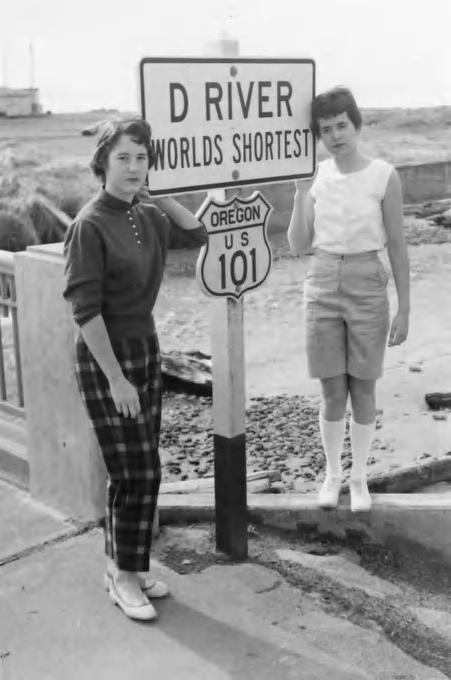Early in the twentieth century, a string of small beach towns with their own distinctive characters grew up in north Lincoln County. Decades later, five of the towns—Taft, Oceanlake, Delake, Nelscott, and Cutler City—consolidated to form Lincoln City.
Taft originated as the allotment of Sissie Johnson (1859-1931) and Jakie Johnson (1859-1933), members of the Siletz Tribe whose allotment was compensation for reservation lands taken by the Dawes Act of 1887. With its location on Siletz Bay, where there was access to the ocean and ready transportation inland on the Siletz River, Taft became the center of the area’s social and economic life.
Oceanlake began as a campground owned by Herbert Rexroad and Edgar L. Hoyt. The tract was registered as Devils Lake Park in the mid-1920s. Another tract, owned by the Catholic Church, was named Raymond, after the church’s pastor. In 1926, when a post office was established, Mrs. H.E. Warren officially named the town Oceanlake because it was situated between the ocean and the lake.
Early Delake residents included Mr. and Mrs. Henry Hostetler, who bought Indian allotment land in 1910, and brothers Alvin and Harry Thorpe. There is some speculation about the origin of the name of the town. Some claim that early Finnish homesteaders would say, “I’m going to de lake,” and the phrase became the name. In another explanation, the d and e constitute a French word meaning “by”—hence, the area “by the lake.”
Nelscott had a very different beginning. In the early 1900s, storeowner Charles P. Nelson glimpsed a lovely valley gently sloping to the ocean. Years later, he and Dr. W.G. Scott purchased the land. Combining their last names, they formed the Nelscott Land Company, and the town of Nelscott was born.
Cutler City was originally part of an allotment inherited by Charlie Depoe, a Siletz. The land was sold to Mary and George E. Cutler, who established a townsite on June 4, 1913. On March 10, 1930, the town officially became Cutler City when a post office named in honor of the Cutlers was established.
When rapid population growth in the 1950s and the subsequent need for improved water distribution, sewers, and fire protection could not be met by each town individually, town leaders began to talk about consolidation. In December 1964, after many failed attempts, the five towns voted to consolidate as one city; they officially incorporated as Lincoln City on March 3, 1965. The name was chosen from a newspaper ballot of five of the most popular names considered: Miracle Beach, Miracle City, Surfland, Holiday Beach, and Lincoln City.
In the year of incorporation, sculptor Anna Hyatt Huntington donated a bronze statue of Abraham Lincoln to the new city. The statue’s dedication by Governor Mark O. Hatfield marked a new beginning for the five towns that had become one.
-
![]()
Pam Holfert and Jean Ferguson, Lincoln City, c.1960.
Courtesy Oregon State University Libraries, Lincoln County Historical Society coll.
-
![]()
The Dorchester House, Oceanlake, c.1935.
Oregon Historical Society Research Library Oregon Journal Negative Collection; Org Lot 1368; Box372;372A878
-
![]()
Former Delake Community House renovated into the Lincoln County Art Center, Lincoln City, 1945.
Oregon Historical Society Research Library Oregon Journal Collection 001023
-
![]()
Proposed layout of Pixieland, July 19, 1967.
Courtesy Portland Oregonian
Related Entries
-
![Cutler City]()
Cutler City
Cutler City, the southernmost neighborhood of Lincoln City on the Orego…
-
![Pixieland]()
Pixieland
Pixieland was a short-lived but popular amusement park on the Oregon Co…
Map This on the Oregon History WayFinder
The Oregon History Wayfinder is an interactive map that identifies significant places, people, and events in Oregon history.
Further Reading
Nelson, Earl. Pioneer History of North Lincoln County. McMinnville, Ore.: North Lincoln Pioneer and Historical Association, 1951-2002.








